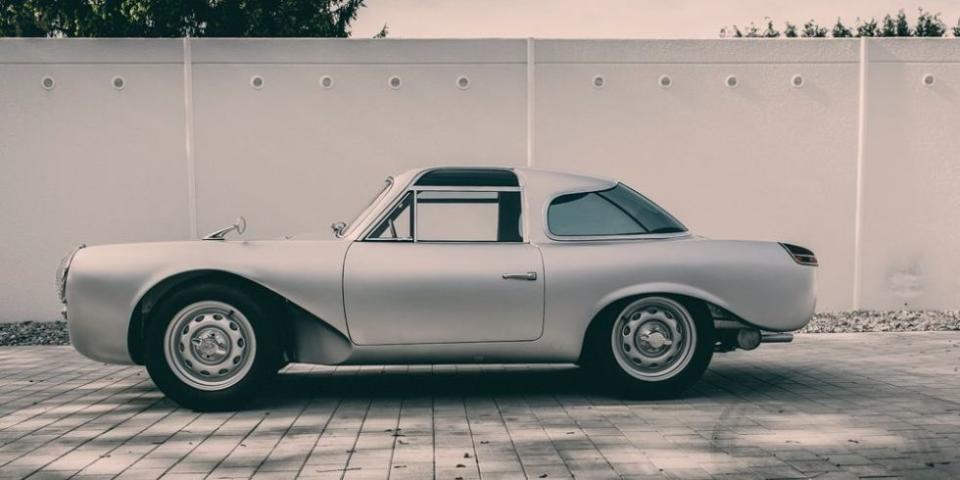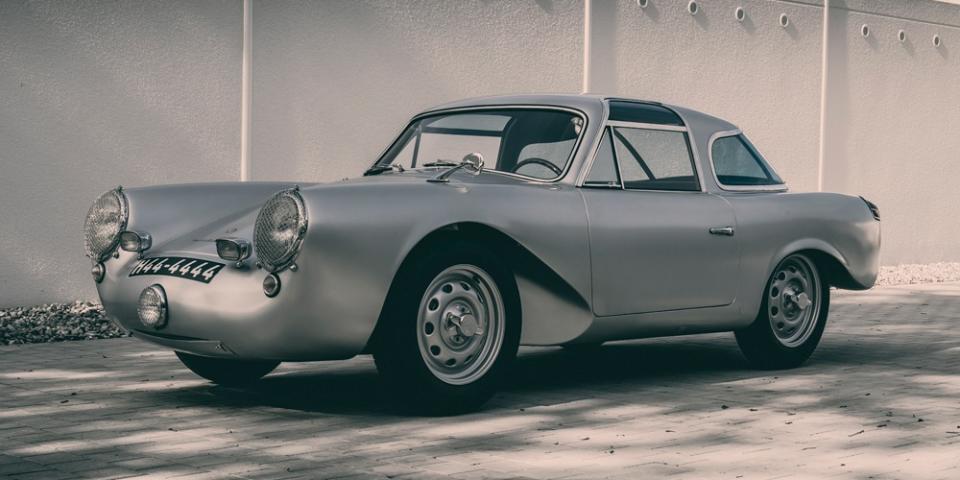Meet The Weirdest, Most Influential Porsche You've Never Heard Of

It may very well be said that without the sausage-shaped vehicle above, Porsche may never have had a racing program; at least, not one so ingrained from the beginning. Walter Glöckler was a motorcycle racer and car dealer in Frankfurt who became an early adopter of this strange new automobile known as the Porsche. He tinkered with these curious lightweight inventions, trying to unlock their full potential. Starting in 1948, the year the first 356 rolled out of the Gmünd factory, Glöckler built six race cars. He and his team carried on the Porsche model of efficiency, lightweight construction, and a general disregard for appearances. With hand-hammered aluminum bodies, they weighed less than 1000 pounds. They were assembled from Porsche and Volkswagen parts, of which Glöckler naturally had easy access. They started winning under-1000cc races across Germany, improving on Porsche's factory designs.
Interestingly enough, the man who saved the second Glöckler Coupe says: "No. 2 was finally sold to a young man from Kentucky, Roger Worth. Roger was a law student, and in order to more easily transport the car, the frame was cut in half (I kid you not). The frame was rather flimsy and Roger eventually decided he would make another, so during one of his moves, the frame was taken to the dump while the running gear and other parts were retained. Life got busy and Roger Worth never finished the project."
In those early years Porsche was too busy dealing with stability and survival to dive into racing. Nonetheless, the Zuffenhausen engineers noticed. Porsche began giving Glöckler their full support-but by 1953, company heads decided that they were financially secure enough to build their own race car. Walter Glöckler's cousin Helm was a racer, too, quite a good one, and that year he entered Le Mans with an official Porsche racing machine, cribbed heavily from Glöckler's early mid-engined coupes: the Porsche 550 Spyder.

True to that good old trope of German efficiency, Glöckler-Porsches were somewhat eccentric in appearance, that form-follows-function enterprise that made an otherwise chopped-down Volkswagen Beetle such a legendary, tasteful success. The first Glöcklers looked like bathtubs with little pillbox bunkers for the afterthought of a driver inside. Later Glöckler-Porsches featured wheel spats on all four corners, small chrome grilles on the front, louvers on oddly-proportioned fastback bodywork, upright headlights that resemble Chevron Cars. No doubt these cars were giant slayers in the races they entered, and no doubt they are worth untold trillions today in the hands of collectors. But that doesn't necessarily mean that they look like Porsches.
The last model Glöckler built was this, the seventh model designed to tackle the 1954 Mille Miglia. We tend to think of midcentury Mille Miglia race cars as sleek, beautiful things, but the seventh Glöckler-Porsche remains blissfully ignorant of such standards. A panoramic window split down the center allowed Glöckler to keep close tabs on his opponents. (Contrast this with the Italian philosophy.) The wheel arches cut into the bodywork. The headlights were nearly vertical, including the vestigial one in the middle, giving the car the exact countenance of a confused duck. None of the window frames lined up. The doors cut into the roof, for easy exit in a crash-back then it was either that, or get thrown from the top of an open-top car and hope to land in a hay bale. The car even had tailfins, because Cadillac Mania, it seems, had taken its toll on the Germans-and if it hadn't yet, by 1959 it would be coyly present on the Heckflosse Mercedes-Benz, present not as gauche filigree but as a "parking aid."
Viewed from the side, the car resembles a shrunken-down Oscar Mayer Weinermobile. It looks like the love child of the Aurora Safety Car and the Stay-Puft Marshmallow man. Says contributor Kevin McCauley, who drives an unloved Porsche and is thusly qualified to comment on such things: "this looks like if the 356 Carrera Abarth was modified into an Amphicar."
The engine came from Porsche engineer Ernst Fuhrmann himself, a Type 547 quad-cam engine from the 550 Spyder that would eventually support the ultra-rare 356 Carrera-and the legendary name that went alongside it. Perhaps the best part about the coupe is that from the inside, speeding along with 110 horsepower, you can't see its exterior quirks.
Sadly, the Glöckler-Porsche 356 Coupe never made it to the starting line at Brescia: delays in production meant that it had to settle for the grueling Liège-Rome-Liège rally instead, where Helm co-drove it to technical failure, still finishing, able to bring the car limping home. The car was sold privately as recently as two years ago, and now wanders the globe from car show to car show, surprising and shocking the hell out of Porsche connoisseurs who can't believe the badge right above that third headlight. Drive tastefully, indeed.
Images via Classic Driver

 Yahoo Autos
Yahoo Autos 